The Ultimate Guide to Plant Substrates and Soils
Welcome to your comprehensive guide to plant substrates! Whether you're a curious beginner or a seasoned plant parent, understanding what's happening beneath the surface is key to growing happy, healthy plants.
Let's dig in! (Pun intended! 😉)
A substrate is any medium in which plants grow their roots. While we often call it "soil," many modern growing mediums don't contain any actual soil at all!
Think of it as your plant's home - just like us, they need a comfortable living space with good amenities.
To know what mix or soil is best for your plant, browse and search your plant to know more about what she likes.
Why does it matter?
The right substrate can mean the difference between a thriving plant and one that's merely surviving. It's like choosing between a cozy apartment with good ventilation and running water versus a damp basement with poor air circulation - which would you prefer?
Your substrate serves four crucial functions:
- Supporting the plant: Acts as an anchor, keeping your plant upright and stable.
- Water retention: Stores water and moisture for your plant's use between waterings.
- Aeration: Provides oxygen to roots (yes, roots need to breathe!).
- Nutrient storage: Acts like a pantry, storing and releasing nutrients as needed.
Understanding soil properties
Water retention
Think of water retention like a sponge's ability to hold water. While you might think it's always best to have good water retention, in reality it's all about balance since too much water can lead to root rot.
Different materials can hold different amounts. When we say a soil has a good water retention, it doesn't mean soaking wet - it means holding just enough water while letting excess drain away.
Aeration and drainage
Roots need oxygen to function properly. Good aeration means having spaces for air within your substrate, we call them air pockets.
Imagine it like a busy city - you need both buildings (substrate particles) AND spaces between them (air pockets).
Drainage is also very important to prevent water from staying at the bottom of you soil, which can suffocate the plants roots.
pH levels
The pH affects nutrient availability to plants. Most houseplants prefer slightly acidic to neutral pH (6.0-7.0) but it might differ for some species.
Think of pH as the "language" that helps plants communicate with nutrients.
If the pH is wrong, they can't "understand" that nutrients are present - if it's good, it will help your plant absorb the nutrients properly.
Nutrient holding capacity
This is your substrate's ability to hold onto nutrients until plants need them. Some materials, like coco coir, are relatively inert and will need regular fertilizing, while others, like worm castings, are very rich in nutrient by default.
Decomposition rates
Organic components decompose over time, breaking down into smaller particles. While this is not necessarily bad, a medium decomposing too fast can compact your soil and reduce drainage.
All the soils proposed on Chlorobase
Soils are the base of what you will use to create sustrate mixes for your plants. We hand-picked a few of them and will use only those ones for the mixes proposed on our website.
Horticultural Charcoal

A porous, carbon-rich material made from burning wood or other organic matter in low oxygen conditions. It improves soil aeration, absorbs excess moisture, and helps prevent the growth of harmful fungi and bacteria.
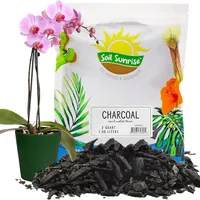
Coconut Chips

Coarse pieces of coconut husk, typically around 1 inch in size. They provide excellent aeration and drainage while retaining some moisture, making them ideal for epiphytic plants and as a sustainable alternative to bark.
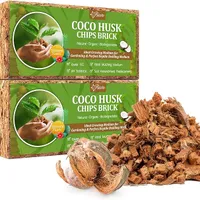
Coconut Fiber

Also known as coir, this natural fiber is extracted from coconut husks. It has excellent water retention properties while still allowing good aeration, making it a versatile growing medium that's particularly useful for tropical plants.
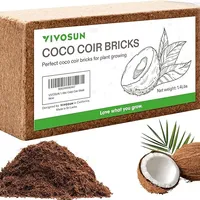
Horticultural Gravel

Small, rounded stones or rock fragments. It significantly improves drainage and aeration in soil mixes, making it an excellent addition for plants that are susceptible to root rot or prefer drier conditions.
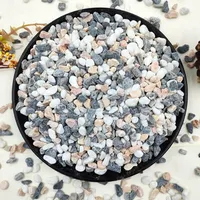
Orchid Bark

Chunks of bark, typically from fir or pine trees, specially processed for horticultural use. It provides excellent drainage and aeration, mimicking the natural growing conditions of epiphytic plants while slowly breaking down to release nutrients.
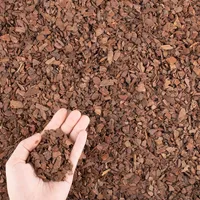
Peat Moss

A decomposed plant material, primarily from sphagnum moss, harvested from peat bogs. It has exceptional water retention capabilities and helps to acidify soil, making it ideal for acid-loving plants and as a component in seed-starting mixes.
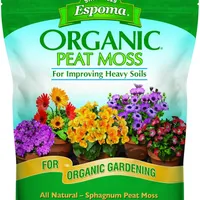
Perlite

A lightweight, volcanic glass material that has been expanded through heating. It significantly improves soil aeration and drainage while being chemically inert, making it an excellent addition to potting mixes for a wide variety of plants.
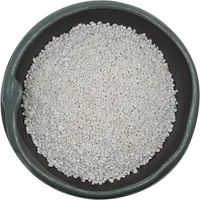
Potting Soil

A pre-mixed growing medium typically containing a blend of dirt and compost. It offers a balanced combination of water retention and drainage, providing an ideal environment for the growth of most container plants.
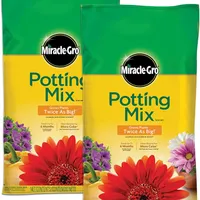
Pumice

A lightweight, porous volcanic rock formed from cooled lava. It provides excellent drainage and aeration while retaining some moisture and nutrients, making it particularly useful for succulent and cactus mixes.
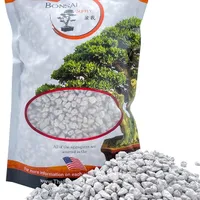
Horticultural Sand

Fine particles of weathered rock, typically quartz or silica. It dramatically improves soil drainage and aeration, making it an essential component in mixes for plants that require sharp drainage or in creating bonsai soils.
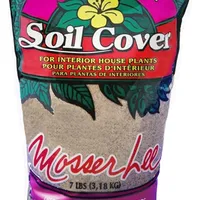
Sphagnum Moss

A fibrous moss harvested from peat bogs, used in its live or dried form. It has exceptional water-holding capacity while remaining light and airy, making it ideal for orchid cultivation and as a natural mulch for moisture-loving plants.
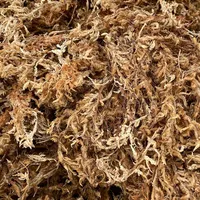
Vermiculite

A natural mineral that expands when heated, creating a lightweight, porous material. It excels at retaining both water and nutrients while improving soil aeration, making it particularly useful in seed starting mixes and for plants that prefer consistently moist soil.
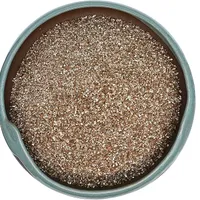
Worm Castings

Nutrient-rich organic matter produced by earthworms as they digest soil and organic materials. They improve soil structure, enhance water retention, and provide a slow-release source of nutrients, promoting healthy plant growth and increasing resistance to pests and diseases.
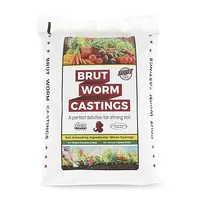
Do the mixes yourself! Or not?
There’s a certain joy in crafting your own soil mixes—you can tweak them to perfectly suit your plants' needs, it's also usually cheaper and leaves you with complete control on the ingredients you use.
On the flip side, pre-made mixes are also convenient and often well-balanced for general use. So it's all on you to decide!
I want in! What do I need?
- A big tub for mixing (I use a storage container I got on sale).
- Something to measure with (old plastic containers work great).
- Gloves (trust me, your manicure will thank you).
- A dust mask if you use soils that are dangerous to breathe (perlite danger!).
- Some storage containers with a lid (because you will have some mix left, I guarantee it).
Storage tips for your DIY mixes
Keep your substrate dry and sealed in a cool place after use. We want it sealed to avoid the substrate from drying out, or getting too moist (ending up with mold or unwanted pests).
Substrate sterilization
If you want to go fully professionnal, you might want to sterilize your mixes to avoid pests or mold.
-
Baking in the oven
- Spread in medium to thin layer.
- Bake at 356°F for 30 minutes.
- Let cool completely.
-
With the power of the sun 🌞
- Place in black bags.
- Leave in sun for a few weeks.
- Turn occasionally.
All the substrates (mixes) proposed on Chlorobase
General purpose mix
A versatile blend with excellent water retention and aeration. Provides balanced nutrition and suitable drainage for a wide variety of houseplants.
To craft this mix, use:
- 70% of potting soil
- 20% of perlite
- 10% of worm castings
Succulent and cactus mix
A well-draining blend with coarse texture. Promotes root health by preventing water-logging and mimicking arid natural habitats.
To craft this mix, use:
- 50% of potting soil
- 30% of sand
- 20% of perlite
Orchid bark mix
An airy, well-draining mix designed for maximum root aeration and moisture control.
To craft this mix, use:
- 50% of orchid barks
- 20% of charcoal
- 20% of sphagnum moss
- 10% of perlite
Tropical plant mix
A rich, moisture-retentive blend with good aeration. Mimics the natural forest floor environment of tropical regions.
To craft this mix, use:
- 50% of potting soil
- 20% of coconut chips
- 20% of perlite
- 10% of worm castings
African violet mix
A light, porous mix that retains moisture without becoming waterlogged. Provides the slightly acidic environment preferred by some plants.
To craft this mix, use:
- 50% of peat moss
- 25% of vermiculite
- 15% of perlite
- 10% of worm castings
Carnivorous plant mix
A nutrient-poor, acidic mix that mimics bog conditions. Provides excellent moisture retention while maintaining necessary aeration for sensitive roots.
To craft this mix, use:
- 60% of peat moss
- 20% of sand
- 20% of sphagnum moss
Epiphyte mix
An extremely well-draining, airy substrate that mimics tree bark. Allows roots to breathe while providing intermittent moisture.
To craft this mix, use:
- 50% of orchid barks
- 30% of sphagnum moss
- 20% of perlite
Cactus mix
A gritty, fast-draining mix that prevents water retention. Replicates the sandy, rocky soils of arid regions.
To craft this mix, use:
- 40% of potting soil
- 40% of sand
- 20% of pumice
Bonsai mix
A coarse, well-draining blend that promotes fine root development.
To craft this mix, use:
- 30% of gravel
- 30% of potting soil
- 20% of sand
- 20% of charcoal
Fern mix
A moisture-retentive yet well-aerated substrate. Provides the consistently damp, humus-rich environment that ferns thrive in while preventing waterlogging.
To craft this mix, use:
- 40% of peat moss
- 30% of coconut fiber
- 20% of perlite
- 10% of worm castings
Air plant mounting mix
A moisture-retaining, fibrous medium perfect for mounting air plants.
To craft this mix, use:
- 100% of sphagnum moss
Acid-loving plant mix
An acidic, moisture-retentive mix with good drainage.
To craft this mix, use:
- 60% of peat moss
- 20% of potting soil
- 20% of perlite
Lithops mix
A gritty, fast-draining mix with minimal moisture retention.
To craft this mix, use:
- 60% of pumice
- 30% of sand
- 10% of potting soil
Substrate maintenance
Just like you wouldn't wear the same socks forever (I hope!), your plants occasionally need fresh substrate.
Here's the down-and-dirty on keeping things fresh:
Re-surfacing
If you see the roots of your plants on top of its pot, or if you notice the top layer of your substrate looking a bit tired, wearing out with holes beginning to appear you might want to re-surface your plant.
- (optional) Scrape off the top of your old substrate.
- Add new and fresh substate on top.
That's it! It will help refresh the nutrients and can extend the time between full repots.
Repoting step-by-step
Spring is usually prime time for repotting - your plants are waking up and ready for some fresh digs.
You also want to watch for signs like:
- A lot of roots coming out of your plant's drainage holes.
- Your plant is trying to escape from its pot.
- Water running straight through when watering your plants.
- It's been a few years and your plant stopped growing.
- Your plant is dying because of root rot or pests: new soil might help save it!
Let's go, here are the steps:
💧 Pro tip
Water your plant 24 hours before repotting. It reduces stress and makes the whole process easier!
- Extract the plant from it's old pot
- Turn your plant sideways, supporting the stem with one hand.
- Gently tap and squeeze the pot to loosen things up.
- (optional) If it's stuck, run a knife around the edge of the pot or try sliding two fingers into the drainage holes and pushing up.
Remember here: BE GENTLE! Roots are very fragile.
- Check the roots while you can
- Healthy roots are usually firm and white or light tan.
- (optional) If your roots are really packed, you can try untangling them using a chopstick or your own fingers.
- Trim any dead, mushy, or extremely crowded roots with clean scissors.
If you see any signs of rot (mushy, brown/black roots), trim them away and maybe dial back your watering schedule
- Prepare the new setup
- Find the perfect mix or substrate looking at your plant requirements.
- Find the new pot for the plant, if you repot due to the plant growing find one slightly bigger than the old one.
- Add a layer of fresh mix to the bottom of the new pot.
- Make sure your drainage holes are uncovered.
A small piece of mesh or a coffee filter over the drainage hole keeps soil from escaping if needed.
- Move the plant
- Center and adjust your plant in its new pot.
- Start filling in around the sides with fresh mix.
- Gently tap the pot on your work surface to settle the soil.
- Keep adding mix until it reaches about 2 inches below the pot rim.
Don't pack the soil too tightly - remember, roots need to breathe!
- The finishing touches
- Give your plant a good watering until water runs out the drainage holes (This helps eliminate air pockets and settles the soil).
- Re-surface the substrate if needed after watering as the soil settles.
After-care
Your plant just went through quite an experience! Here's how to help it adjust:
- Hold off on fertilizing for about a month
- Maintain regular watering, but don't overdo it
- Don't panic if a leaf or two drops - it's normal!
Troubleshooting
- Everything is compacted: Over time, some substrates compress, reducing airflow. The easiest solution is to repot with fresh, well-aerated material like perlite or pumice.
- My soil never dries!: Time to add more draining soil to your mix like perlite or pumice.
- Some small flies are living in the soil: We call them fungus gnats. These pests love moist, organic-rich substrates. Allow the top layer of the substrate to dry out, and consider adding a layer of sand.
Summary
Whew! We've covered a lot of stuff again. Small TL;DR if you are too busy:
- There's no one-size-fits-all substrate.
- Start marking your mixes to become the ultimate gardener.
- Consider the other factors of your environment (humidity, watering habits).
- Don't be afraid to experiment!
The key is to pay attention to your plants - they're pretty good at letting you know what they need, once you learn to speak their language.
Happy mixing!Affiliate products in this page: As an Amazon Associate I earn from qualifying purchases.
